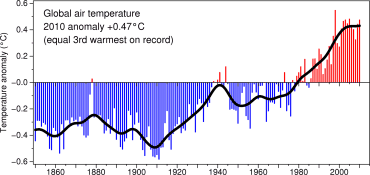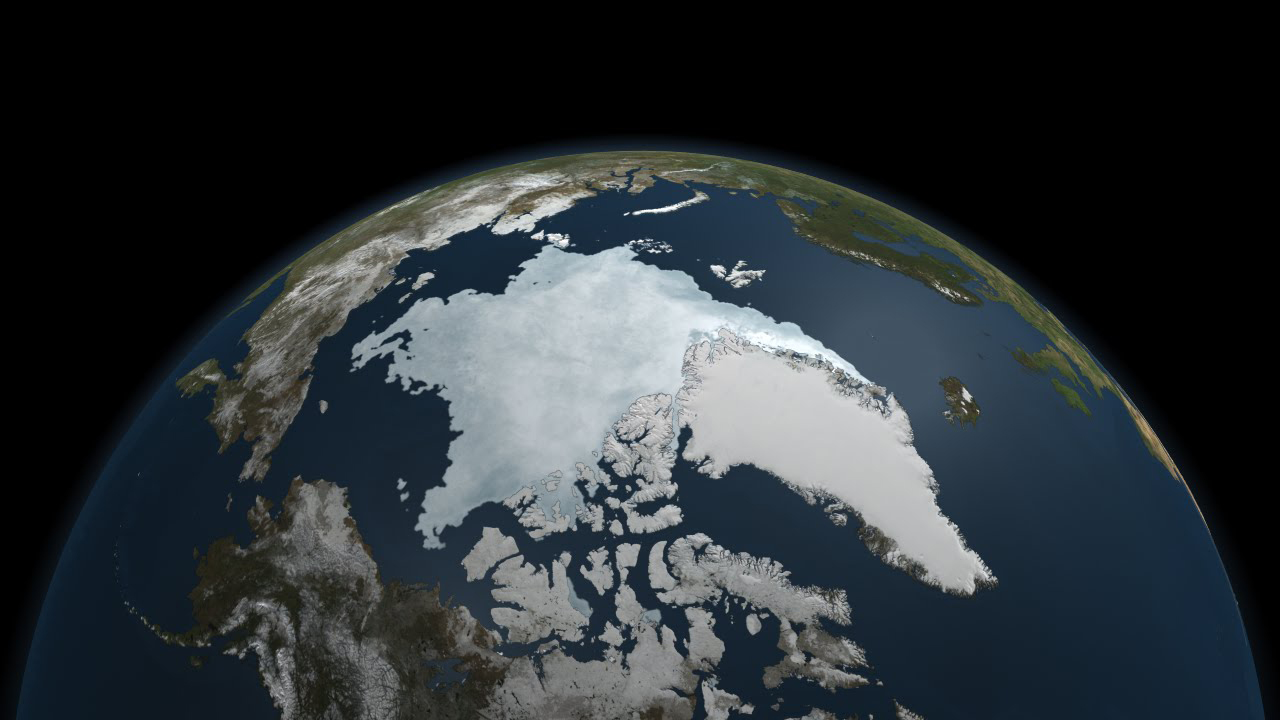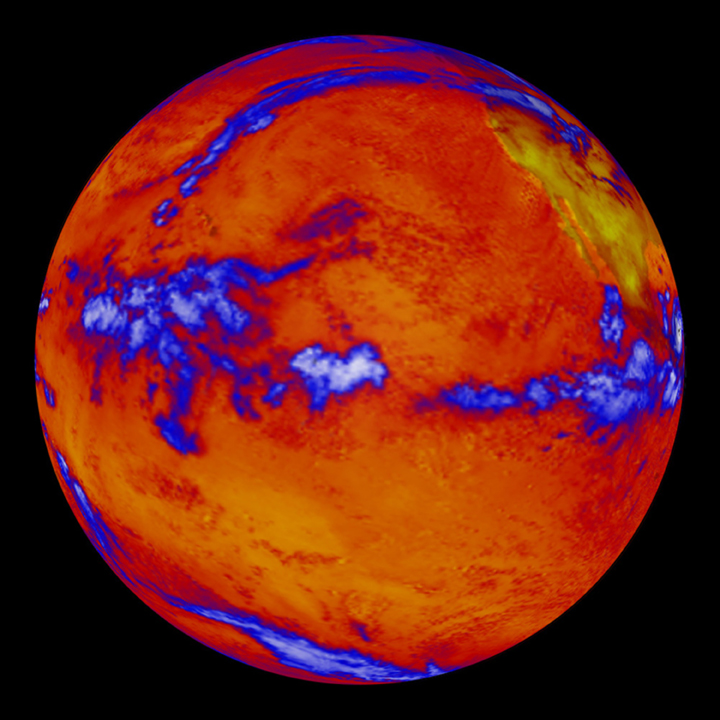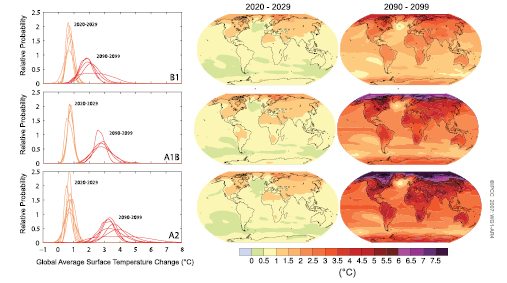
Global Air Temperatures, 1850 thru 2010 (image courtesy of Climatic Research Unit, Univ. East Anglia)
| People |
Meetings |
Papers |
Other Links |

Global Air Temperatures, 1850 thru 2010 (image courtesy of Climatic Research Unit, Univ. East Anglia)
In 2005 the IDAG group published a review paper (IDAG, 2005), which reported further evidence and open questions on the detection of climate change since the TAR. Group members were heavily involved in the Fourth Assessment, Working Group 1 activities, several serving as Coordinating, Review, or Lead Authors. Nearly all other group members were contributing authors to the IPCC effort. Group members were also involved with the CCSP effort as Coordinating Lead authors, and in serving on the NRC review panel. Several group members were Lead Authors for CCSP SAP 3.3 (extreme events) and CCSP SAP1.3 (reanalyses and attribution of recent climate change). The group as a whole and individually has contributed substantially to all IPCC Assessment reports since the Second Assessment Report, and is currently engaged with the process for the Fifth Assessment Report (AR5).

Shrinking Arctic Ice (image courtesy of NASA)

Surface Temperature (image courtesy of NASA)
With the focus of detection and attribution studies shifting towards addressing subcontinental scales and variables other than temperature, many of the activities of the group have also been increasingly involved in research more directly relevant to the assessment of impacts of climate change, for example by addressing changes in extreme events, or by becoming involved in studies that explicitly address climate change impacts. Biographies of the individual members can be found on the "People" link above.

Projected surface temperature changes. From Figure SPM.6 from the Summary for Policy Makers, IPCC Fourth Assessment Report